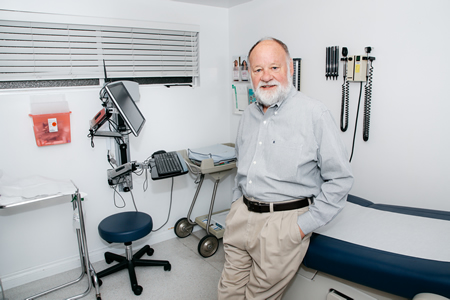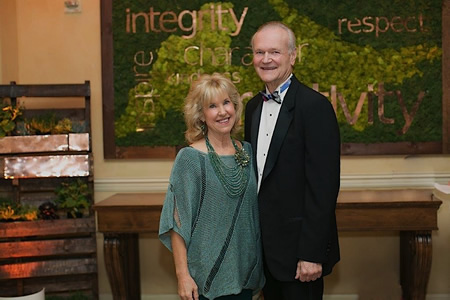
Photo by Jody tiongco.
By Randy Kraft, Special to the Independent
On any weekend in Laguna Beach, familiar faces circulate at charitable events helping to raise funds. However, as essential and welcome as their contributions are, non-profits also require governing boards to satisfy federal requirements for incorporation and that is no easy task in a small town.
Even more so in Laguna, where 225 non-profits are registered, according to Dan Pingaro, executive director of the Laguna Beach Community Foundation, which manages and dispenses private funds and promotes local charities. To fill the typical 15-seat board, the national average reported by philanthropy consultants, would require 3,375 directors, or participation by one-third of local households.
Beyond time and energy, financial commitments expected of board members may be an obstacle to recruiting new leaders. Nationally, nearly half of non-profits have what’s known as a “give or get,” an annual obligation to donate or secure funding at a certain level, says charity consultant Board Source, and the local non-profits interviewed have similar practices.
Beyond annual donations, directors are expected to provide program and fiscal oversight, join committees, attend events, and serve as ambassadors in the community. A tall order.
“Only a limited number of people have the time, talent and inclination, and the resources to serve as board members,” Pingaro said.
Members of the 11-person board of Laguna Beach Seniors pay a modest $500 in dues and are also asked to make a major gift starting at $1,000, said Chris Quilter, president.
At the Community Clinic the commitment is $5,000 annually. In addition, all 18 directors are required to serve on a committee and to bring guests with them to events.
“Another major board responsibility is to grow the board and we ask our members to bring someone else along for the future,” said George Heed, board president.
As a rule, nominating committees are tasked with identifying potential members. Joe Hanauer, president of the Laguna Playhouse, said that a well-managed process involves assessing whether a candidate’s interests and financial capability align with the organization.
“This often occurs through an interview process that precedes an invitation to join,” said Hanauer.
Hanauer says he personally considers board requests based on his schedule, passion for the mission, and whether his skill set is beneficial. “If it’s only money, I can contribute without joining the board; if I join, I want to be active and helpful,” said Hanauer.
Laguna Beach Live!’s 12 trustees and Laguna Dance Festival’s nine commit to $2,500 annually. In contrast, Laguna Art Museum’s 22 board members pledge $10,000, although that board includes three ex-officio members – two artists and a liaison from City Council, this year Bob Whalen – who are not required to give.
“It’s important everyone gives the same so there is no animosity that some are giving and some not,” said chair Robert Hayden III. Nevertheless, he contends that matching board member to mission is crucial. “Recruiting only for money can be a train wreck.”
Board members frequently ante up in other ways: they sponsor or give big at events, make special needs donations or commit to capital or endowment campaigns.
Dr. Tom Bent, the clinic’s chief operating officer, said that directors have pledged $2 million in legacy gifts, another form of giving crucial for organizational sustainability.
At Friendship Shelter, where 19 directors each fulfill a $5,000 give or get, the average annual gift is twice that, according to Executive Director Dawn Price. However Price looks beyond the dollars.
“As we add next generation directors, we need to realize their individual giving might be lower than other members, but their overall influence today and in the future may be great,” said Price.
Pam Estes, executive director of Boys & Girls Club of Laguna Beach, concurs. She believes the number of board members depends on where the organization is in its life cycle.
“We expanded budget and programs really fast in the last five years, so we need to grow our board, and it can be difficult to recruit,” said Estes.
At SchoolPower, whose mission is to raise funds for local schools, 65 trustees, comprised largely of couples, contribute $1,500 per family to the annual campaign, which includes two tickets to the annual gala, and participate in the campaign call-a-thon. Trustees may designate up to 20 percent of their giving to a teacher or program.
SchoolPower’s board is younger on average and funds raised directly benefit their children. As a result, although the organization seeks four to six new members annually, there is a lot of interest, said Amy Kramer, board president.
“Our goal is to get people to be all in; to contribute and participate,” said Kramer.

Given the challenge to board recruiting, it is no surprise that some philanthropic locals double up. Gary and Betsy Jenkins, for example, together serve five local non-profits, and Joe and Jane Hanauer serve four.
“I feel that a board financial requirement is essential to many organizations and also creates a close bond and commitment to the group,” said Betsy Jenkins, adding that her decision to join is based totally on her passion for the organization.
Even the most committed directors burn out, or are termed out, so there is always a need for fresh blood, and even recycled board members bring new ways of thinking to the team, as well as new funding.
Pingaro said the Community Foundation would be happy to help recruit board members. “We can help make a match, if we’re asked.”
Randy Kraft is a freelance journalist and novelist, and former non-profit marketing professional, and also posts book reviews at www.ocinsite.com.




